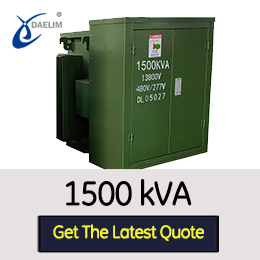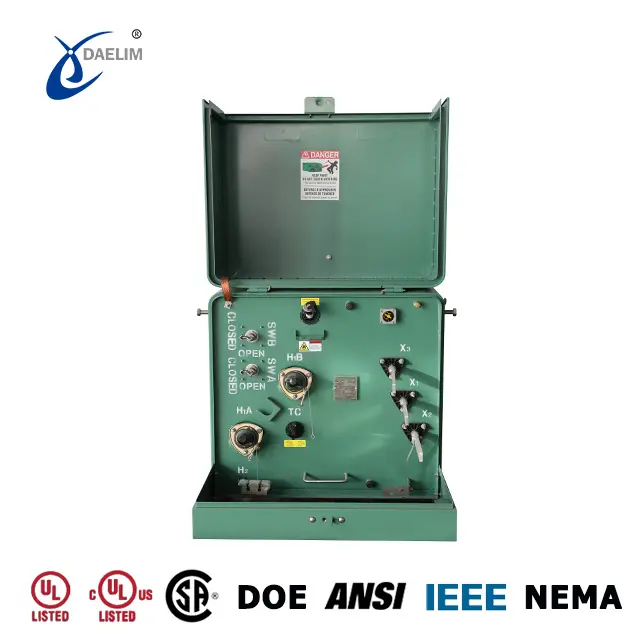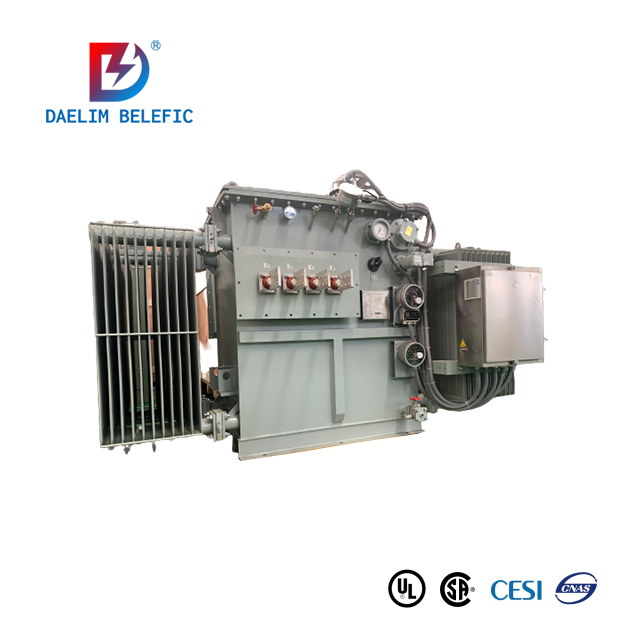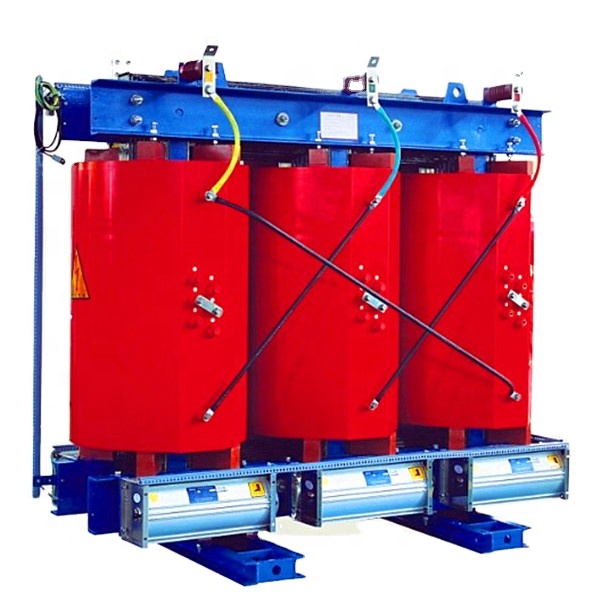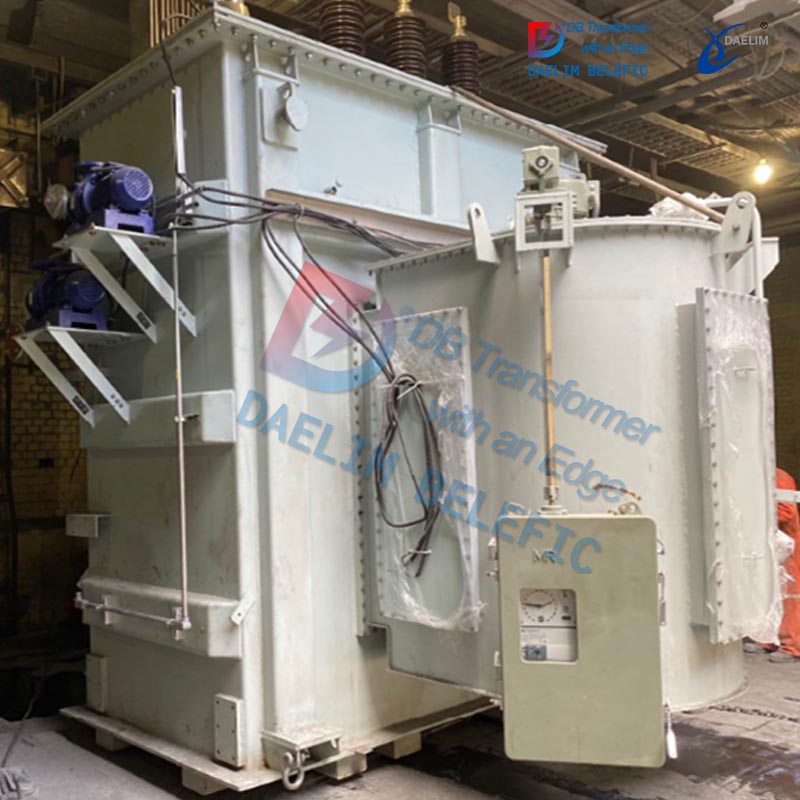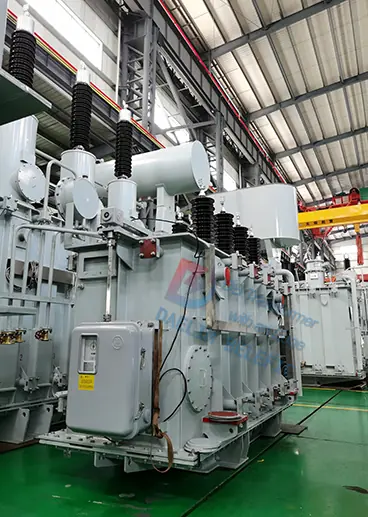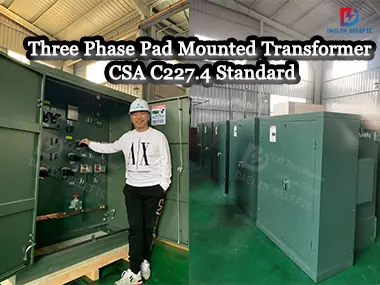Ultimate Guide To Transformer Sizes and Ratings
Transformers come in a wide range of sizes and ratings, and the specific requirements of the application will determine the appropriate size and rating for a particular transformer. It is important to choose a transformer that is specifically designed and rated for the required voltage, current, power, frequency, and temperature levels.
Daelim is a supplier that can provide transformers of any size and rating. Meets all international standards and provides complete ul listings. The fast delivery period of 4-8 weeks and the professional local after-sales installation team will make you feel more secure and confident when purchasing transformers.
What affects the sizes and ratings of the transformer?
Transformers come in a wide range of sizes and ratings, depending on the specific requirements of the application. The size and rating of a transformer are determined by several factors, including:
The voltage rating of a transformer is the maximum voltage that it can handle without being damaged. Transformers are rated for high-voltage (HV), medium-voltage (MV), or low-voltage (LV) applications, depending on the voltage levels involved.
The current rating of a transformer is the maximum current that it can handle without overheating or being damaged.
The power rating of a transformer is the maximum amount of power that it can handle. It is usually expressed in kilovolt-amperes (kVA) or megavolt-amperes (MVA).
The frequency rating of a transformer is the range of frequencies that it can handle. Most transformers are designed for use at 50 or 60 Hz, but some specialized transformers can handle higher or lower frequencies.
The temperature rating of a transformer is the maximum temperature that it can handle without being damaged. This is important for transformers that are used in hot environments or that generate a lot of heat during operation.
Related Article
The Ultimate Guide To Transformer Ratings
Transformer Sizes

It is essential to know the correct size of the transformer before you buy one. The size of the transformer determines its capacity and voltage. The voltage provided by a transformer is determined by its power rating, which indicates how much current it can supply at a given amperage. It's best to buy your transformer from an electric supplier if you are sure about your purchase because they usually carry varied sizes for you to choose from based on your requirements.
Transformer Ratings

Electrical transformer ratings are used to specify the electrical power output of an electric transformer. The three most common specifications are:
• Input Voltage - This is the voltage input to the primary winding of an electrical transformer. Transformers with rated input voltages can be used with a wide range of voltages and power levels.
• Output Voltage - This is the voltage out of the secondary winding, over and above that which is supplied from the primary winding.
• Transformer Power Rating - This specifies how much watts flow through a given size, shape, number, and physical location on a typical transformer's device, or in other words how much energy it will consume at a certain load (e.g., an AC mains supply).
You may enjoy: The Ultimate Guide To IEC 60076 Standard
Transformer Sizes 3 Phase

In the engineering world, transformers come in a variety of sizes. There are three different types: 3-phase, 4-phase, and 6-phase. This tutorial is designed to assist you in choosing the right size transformer for your application by giving you an understanding of how each type works.
The size of a three-phase transformer refers to its capacity to handle power, typically measured in kilovolt-amperes (kVA). The size of a three-phase transformer is determined based on the load requirements of the electrical system it is serving. Larger transformers can handle more power, while smaller transformers are used for lower-power applications. The exact size of a three-phase transformer will depend on various factors such as voltage levels, current levels, frequency, and efficiency requirements.
Smaller transformers typically require more current while larger ones need less power to operate as they have more insulation and bigger windings. There are also some differences in cost related to size although this can be easily mitigated by selecting compatible components when building a power supply or integrating it into an existing one.
Reading more: 3 Phase Pad Mounted Transformer
3 Phase Transformer Calculation Formulas
Here are some formulas that can be used to calculate various parameters of a three-phase transformer:
P = √3 × V × I × pf, where
V is the voltage,
I is the current,
pf is the power factor.
Voltage regulation = (No-load voltage - Full-load voltage) / Full-load voltage, where
No-load voltage is the voltage measured on the secondary side with no load,
Full-load voltage is the voltage measured on the secondary side under full load.
Efficiency = Output power / Input power, where
Output power is the power delivered to the load,
Input power is the power supplied to the transformer from the source.
Try for free: Transformer Efficiency: The Ultimate FAQs Guide - Daelim
Impedance = √(R² + X²), where
R is the resistance,
X is the reactance.
Related Article
The Impact of Impedance on Transformer Design
Isc = √3 × V × 1 / Z, where
V is the voltage,
Z is the impedance.
These are just a few examples of the formulas that can be used to calculate various parameters of a three-phase transformer. Keep in mind that the accuracy of the results depends on the accuracy of the input data used in the calculations.
1600kva Transformer

1600KVA is the maximum power rating for this transformer. The I and V ratings are specified in VA, which is not an abbreviation for volts, but rather it stands for Volt Amps. A VA rating is equal to 1000V/1A, so if you have a 3000VA transformer it would be rated at 3000/3000V or 3,000volts of current. The typical voltage rating for this type of transformer would be 1000-2000 volts (in other words 10k-20k or even more).
The typical current rating for this type of transformer would be 1 - 2.5A. The reason you want a high current is that a high current will generate more heat when it's in use, thus the efficiency of the transformer is kept at 100% efficiency. A lower current would mean lower power and less heat, which translates to less efficient energy usage resulting in reduced life expectancy of your expensive and heavy-duty 1600kVA transformer.
Usually, transformers are used to handle high voltages and currents that are made by generators. They come in various types but the most popular ones are toroidal transformers and laminated core transformers.
You may enjoy: Pad Mounted Transformer
What Are the Standard Sizes of Transformers?
The standard sizes of transformers vary depending on the voltage levels, power handling capacity, and application. Some common sizes for distribution transformers are:
5 kVA, 7.5 kVA, 15 kVA, 20 kVA
30 kVA, 45 kVA, 75 kVA, 112.5 kVA, 150 kVA, 225 kVA, 300 kVA
500 kVA, 750 kVA, 1000 kVA, 1500 kVA, 2000 kVA, 2500 kVA, 3000 kVA, 5000 kVA, 10,000 kVA
These are just some examples of standard transformer sizes. Keep in mind that the actual size of a transformer will depend on the specific requirements of the electrical system it is serving. Transformers can also be custom-designed to meet specific requirements.
Get it now: Residential Transformer: The Small Green Box in the Neighborhood
How Is a Transformer Sized and Rated?
A transformer is sized and rated based on the load requirements of the electrical system it is serving. The following are some of the factors that are considered when sizing and rating a transformer:
Load demand: The size of the transformer is determined by the amount of power that is needed to supply the load. The load demand is calculated based on the current requirements of the equipment and the voltage level at which it operates.
Voltage levels: The voltage levels of the electrical system are also considered when sizing a transformer. The primary and secondary winding voltages of the transformer must match the voltage levels of the electrical system.
Power factor: The power factor of the electrical system is also taken into account when sizing a transformer. A low power factor results in a larger current demand, and therefore, a larger transformer may be required.
Efficiency: The efficiency of the transformer is also a consideration when sizing it. Transformers with higher efficiencies are typically larger and more expensive.
Overload capacity: The transformer must be able to handle short-term overloads without damaging the windings or insulation. The overload capacity of the transformer is determined based on the expected load requirements and the duty cycle of the electrical system.
Once the size of the transformer is determined, it is rated based on its capacity to handle power. The rating is typically expressed in kilovolt-amperes (kVA) and indicates the maximum amount of power the transformer can handle without exceeding its temperature and insulation limits.
Keep reading: Ultimate Guide To 25 kV Transformer
What Size of Transformer Do I Need?
The size of the transformer you need depends on the load requirements of your electrical system. Here are the steps you can follow to determine the size of the transformer you need:
Determine the load demand: Calculate the total current demand of the equipment you will be powering. This can be done by adding up the current ratings of each piece of equipment and taking into account the expected duty cycle of the equipment.
Consider voltage levels: Make sure the voltage levels of the electrical system match the voltage levels of the transformer. The primary and secondary winding voltages of the transformer must match the voltage levels of the electrical system.
100 kVA Transformer Load Capacity
A 100 kVA transformer is rated to handle a maximum power output of 100 kilovolt-amperes. This rating indicates the maximum power the transformer can handle without exceeding its temperature and insulation limits. The actual load capacity of the transformer will depend on the voltage levels, power factor, and efficiency of the electrical system it is serving. Keep in mind that the load capacity of a transformer should not be exceeded, as this can result in overheating and damage to the transformer's windings and insulation. It's always recommended to choose a transformer with a slightly higher rating than the actual load demand to allow for future expansion or fluctuations in load.
Related Article
The Ultimate Guide To 100 kVA Transformer
How Do I Know Which Transformer to Use?
To determine which electrical transformer to use, you need to consider several factors, including:
- Voltage output: The voltage output required by your device or system.
- Current rating: The maximum amount of current the transformer can handle.
- Power rating: The maximum power the transformer can handle, often expressed in VA (Volt-Amperes).
- Frequency: The frequency of the AC power source, usually 50 or 60 Hz.
- Size and weight: The size and weight of the transformer, should be appropriate for the installation location.
- Efficiency: The transformer's efficiency is the ratio of output power to input power.
- Cost: The cost of the transformer, should be within your budget.
- Environmental conditions: The operating temperature, humidity, and other conditions of the transformer will be exposed.
Consulting with an electrical engineer or a specialist in your specific application can help you make the best choice for your particular requirements.
Try for free: Single phase pad-mounted transformer
Why is Transformer Rating in kVA?
The power rating of a transformer is usually expressed in kVA (kilovolt-amperes), because kVA is a measure of apparent power, which is the product of the voltage and current in an AC system. Apparent power is a useful measure of the capacity of a transformer because it takes into account the voltage and current required to operate a device or system.
When designing or selecting a transformer, it is important to ensure that the apparent power rating is sufficient to meet the demands of the system being powered. A transformer with a higher kVA rating can handle a larger load, but it may also be larger, heavier, and more expensive than a transformer with a lower kVA rating.
Expressing the power rating in kVA helps to ensure that the transformer is matched to the load requirements and helps to prevent overloading and failure of the transformer and connected equipment.
Why kVA Is Used Instead of kW?
KVA (kilovolt-amperes) is used instead of kW (kilowatts) as the power rating of a transformer because KVA is a measure of apparent power, which is the product of the voltage and current in an AC system. Apparent power is a useful measure of the capacity of a transformer because it takes into account both the voltage and current required to operate a device or system.
In contrast, kW is a measure of real power, which is the power that is actually used by the load. Real power is the portion of apparent power that is converted into useful work, and it is lower than apparent power because of losses in the system, such as resistance, inductance, and capacitance.
By expressing the power rating in kVA, the transformer's capacity to handle the current and voltage requirements of the system is accurately represented. This helps to ensure that the transformer is properly matched to the load requirements and helps to prevent overloading and failure of the transformer and connected equipment.
What Is the Difference Between kVA and kV?
kVA (kilovolt-amperes) and kV (kilovolts) are different units of electrical measurement used in power systems.
kVA is a unit of apparent power, which is the product of the voltage and current in an AC system. Apparent power represents the total power that is required to operate a device or system, and it is an important measure of the capacity of a transformer or generator.
kV, on the other hand, is a unit of voltage, which is the electrical potential difference between two points in a circuit. Voltage is a measure of the electrical energy that drives the flow of current in a circuit.
kVA is a measure of the capacity of a power system to handle the voltage and current requirements of a load, while kV is a measure of the electrical potential difference in a circuit.
Reading on: Exploring Everything About 2000 kVA Transformer
Why should you buy Daelim Transformer?
Daelim is a well-known brand in the transformer industry and is known for its high-quality products. Transformer with UL/cUL, CSA certificates.
Daelim transformers are designed and manufactured with reliable components and materials, ensuring consistent and reliable performance.
Daelim offers a wide range of transformers, including custom-designed units to meet specific requirements.
Daelim provides comprehensive technical support and customer service to assist customers with their transformer needs.
Daelim transformers are competitively priced, offering good value for money.
Daelim transformers come with a warranty, which provides added peace of mind.
Related Products
Related Article
The Ultimate Guide To 30 MVA Transformer
The transformer of 30MVA capacity is usually a high-voltage grid level.s a professional transformer supplier, Daelim can provide transformer voltage levels with 35 kV, 38 kV, 66 kV, 69 kV, 110 kV, 115 kV, 132 kV, 138 kV, 220 kV, 230 kV, etc
The Ultimate Guide To IEC 60076 Standard
Daelim is IEC, ANSI/IEEE, AS, CSA, and UL transformer manufacturer who has been exported to countries around the world. The transformers supplied by Daelim fully meet and exceed the requirements of the IEC 60076 standard.
Pad Mounted Transformer CSA C227.4 National Standard of Canada
As a transformer buyer and manufacturer, you should be familiar with the local transformer design requirements and standards. This article tells the Canadian country's transformer standard CSA C227.4, the pad-mounted transformer below 3000kva.


